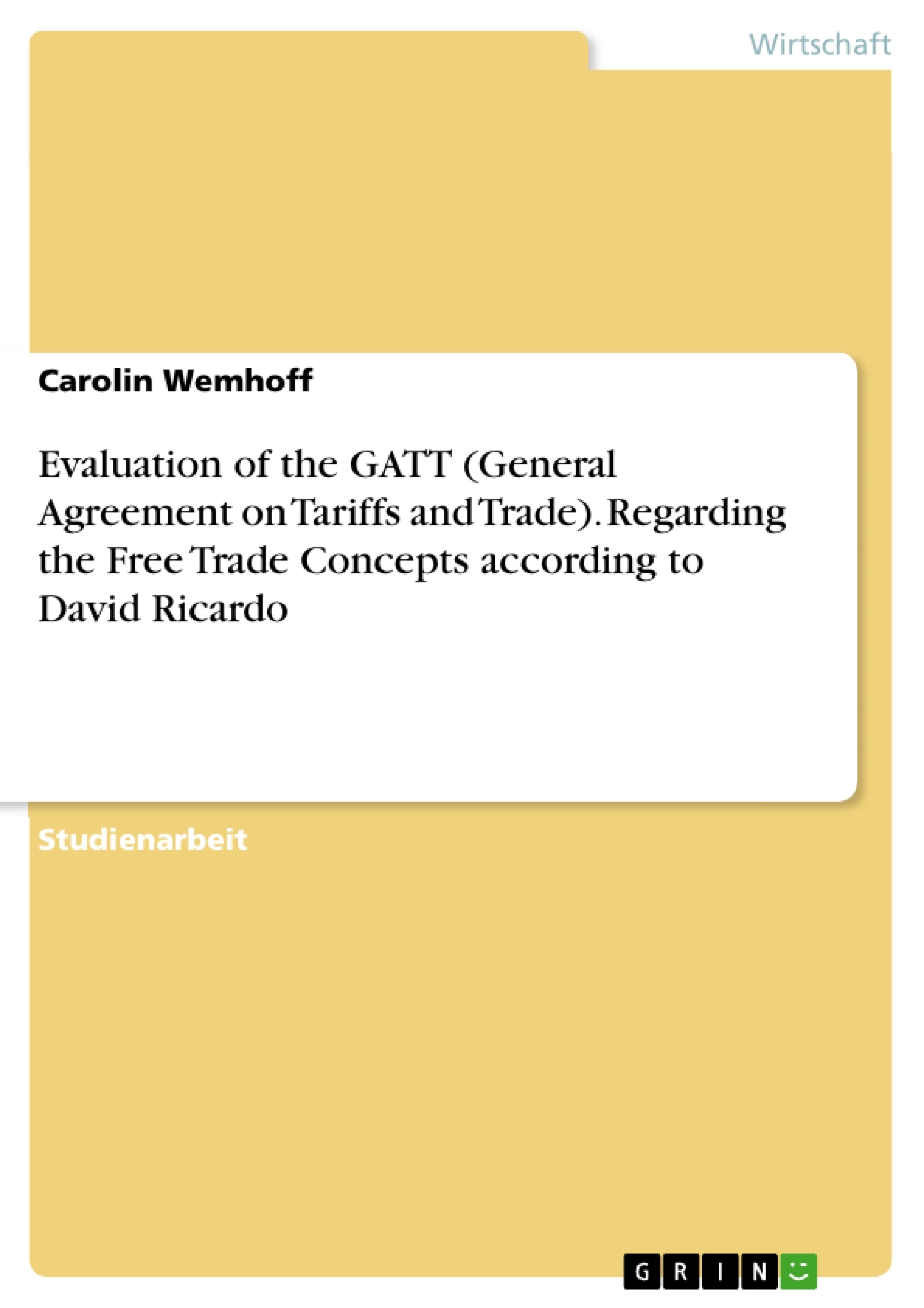This thesis aims to present the GATT (General Agreement on Tariffs and Trade) and its historical background in its main features and to examine what extent the GATT corresponds to the free trade conception according to David Ricardo.
Historically, free trade is still a relatively new concept. Between the 16th and 18th centuries, in the age of mercantilism, the idea of protectionism still predominated. The interstate exchange of goods is based on the assumption that the own country could make profits at the expense of its trading partners through import quotas and import tariffs. At the same time, attempts are made to support the country's own exports through promotional measures. This protectionist approach has left its mark until today in form of protective tariffs for example.
Mercantilism is followed by the idea of liberalism and therefore the idea of free trade. Adam Smith is considered the founder of free trade theory. His model of absolute cost advantage is later developed into the model of comparative cost advantage by the economist David Ricardo.
Inhaltsverzeichnis
- Introduction
- Problem
- Objective and approach
- Historical Background
- General Agreement on Tariffs and Trade
- Control mechanisms
- Most favored - nation principle
- National principle
- Reduction of tariffs and non - tariff trade barriers
- General exceptions
- Establishment World Trade Organization
- Free trade according to David Ricardo
- Compatibility GATT - David Ricardo
- Conclusion
Zielsetzung und Themenschwerpunkte
Die Arbeit untersucht die Evaluation des Allgemeinen Abkommens über Zölle und Handel (GATT) im Hinblick auf die Freihandelskonzepte von David Ricardo. Sie analysiert die Kontrollmechanismen des GATT, die allgemeinen Ausnahmen und die Etablierung der Welthandelsorganisation (WTO). Die Arbeit befasst sich auch mit der Frage der Kompatibilität des GATT mit den Freihandelstheorien von David Ricardo.
- Evaluation des GATT
- Freihandelskonzepte von David Ricardo
- Kontrollmechanismen des GATT
- Allgemeine Ausnahmen
- Etablierung der WTO
Zusammenfassung der Kapitel
Die Einleitung stellt das Problem und die Zielsetzung der Arbeit dar. Das zweite Kapitel bietet einen historischen Hintergrund zum GATT. Das dritte Kapitel analysiert die Kontrollmechanismen des GATT, darunter das Meistbegünstigungsprinzip, das Nationalprinzip und die Reduzierung von Zöllen und nichttarifären Handelshemmnissen. Es werden auch die allgemeinen Ausnahmen und die Etablierung der WTO behandelt. Das vierte Kapitel befasst sich mit der Freihandelstheorie von David Ricardo. Das fünfte Kapitel untersucht die Kompatibilität des GATT mit den Freihandelskonzepten von David Ricardo.
Schlüsselwörter
GATT, Freihandel, David Ricardo, Zoll, nichttarifäre Handelshemmnisse, Meistbegünstigungsprinzip, Nationalprinzip, WTO, Internationale Wirtschaftspolitik.
- Quote paper
- Carolin Wemhoff (Author), 2021, Evaluation of the GATT (General Agreement on Tariffs and Trade). Regarding the Free Trade Concepts according to David Ricardo, Munich, GRIN Verlag, https://www.grin.com/document/1025316



